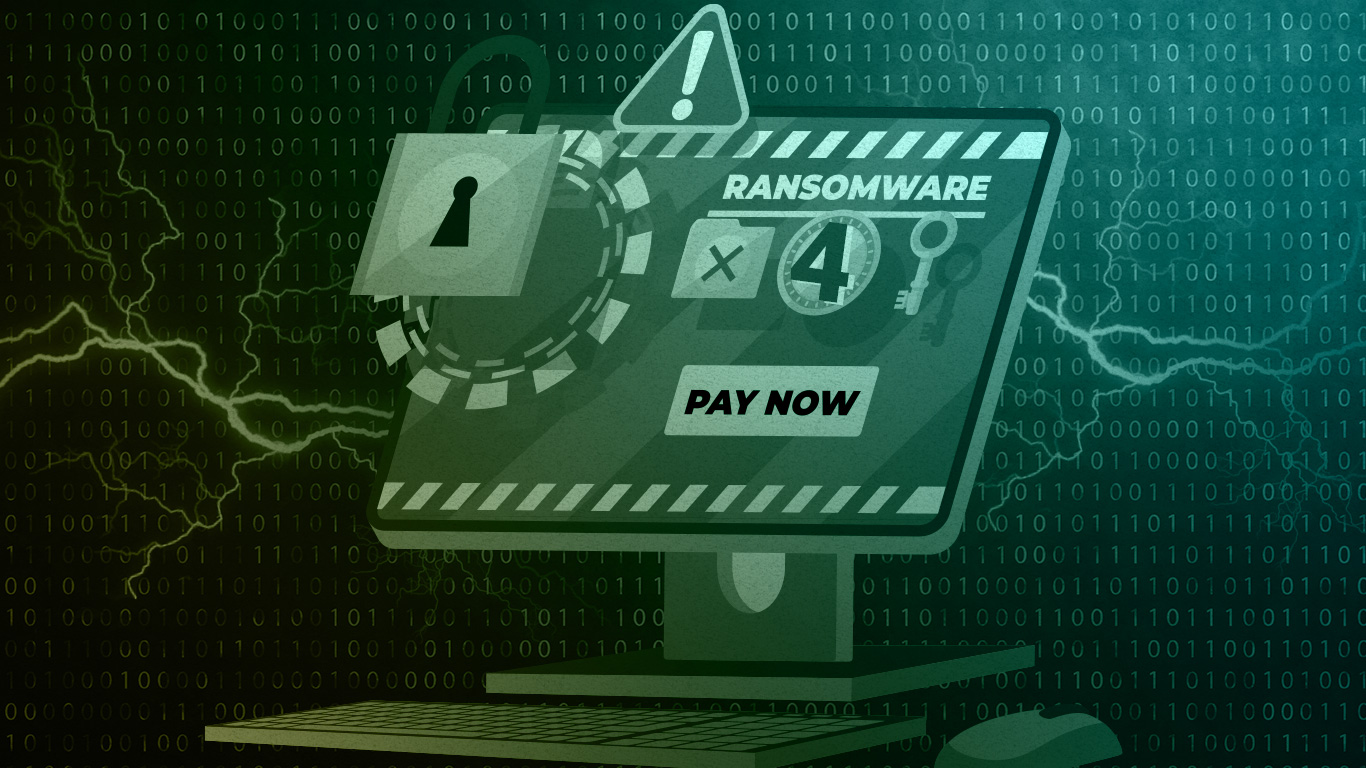
Beware of Ransomware! Check These 4 Preventive Steps!
Friday, 19 May 2023
In today’s business environment where everything is digitally saved, information may be accessed real-time over the internet, and at a lower cost. With just one click, everything is completed effortlessly and efficiently. Digitalization has improved computer users' quality of life. However, "Every pillar has two sides," as the saying goes. If used as a whole, digitization has reduced crime by making tasks easier to do and by reducing paperwork. However, it still poses a security issue for a person's private and confidential information. Recently, several Indonesia's banking services was digitally attacked which caused disruption to all banking services from the ATM network to its mobile banking services. This all was caused by ransomware attacks.
Malware, short for malicious software, is any intrusive software created by cybercriminals (often referred to as hackers) in order to steal data and harm or completely destroy computers and computer systems. Malware types that are frequently encountered include worms, Trojan horses, spyware, adware, and ransomware. Massive amounts of data have been exfiltrated by recent malware attacks.
When it comes to minimize potential threats ang build a robust cybersecurity system, Multimatics realize that cybersecurity is important and therefore is equipped with the latest cybersecurity framework and experts consultants who are ready to deliver end-to-end security solutions that could imrplve your business performance. Check more on our cybersecurity training, cybersecurity certification, and cybersecurity consultancy products to
What is Ransomware?
Malware known as ransomware uses encryption to demand a ransom for access to a victim's data. Critical data for a user or organization is encrypted to prevent access to files, databases, or applications. Then access is sought in exchange for a ransom. Ransomware can easily shut down an entire company since it is frequently made to propagate over a network and target database and file servers. It is an expanding menace that brings in billions of dollars in payments to hackers while causing serious harm and high costs for businesses and governmental institutions. A common and dangerous type of malware that works by locking up or encrypting the victim's files so they can no longer access them.
How Does Ransomware Work?
1. Reconnaissance
Reconnaissance, as used in cybersecurity, is the process of secretly learning about and gathering data on a system. This technique is frequently employed in penetration testing or ethical hacking. Reconnaissance is a phrase used in cybersecurity that, like many others, has military roots and describes an operation designed to gather intelligence from hostile territory. Attackers scan the infected system to find files they can target and additional credentials enabling them to infect more devices.
2. Activation
When malware is launched, devices become locked and network data becomes encrypted, making it impossible for you to access it. Attackers start to locate and encrypt data, as well as disable the system restore functionality and delete or encrypt backups on the victim’s network/device.
3. The Ransom Note
The ransom note typically contains instructions on how to deliver payment, the required amount, and the threat of what will happen if you don't. People who have been affected may desire more information as well as perhaps other ransomware eradication or preventive tools, such as a free online decryption tool. You must first identify the type of ransomware that affected you. Here are some of the most well-known ransomware kinds' current ransom notes for your reference. Attackers notify the victim once files have been encrypted and. In exchange for a decryption key, the ransom letter will provide instructions on how to pay the ransom.
Follow These 4 Ways of Ransomware Prevention!
According to Statista (2023), organizations from all around the world detected 493.33 million ransomware attacks in 2022. Ransomware can have a negative impact on organizations. Recovery process can be expensive, so how to avoid it then?
1. Securing all Remote Desktop Protocol (RDP)
Work from home (WFH) has been popular since COVID-19, yet home networks are often insecure. Thus, solid basic hygiene including strong passwords, multi-factor authentication, and network-level authentication is crucial.
2. Multi-Factor Authentication (MFA)
MFA is highly advised for vital assets and high-risk users. For attacks that rely on credential-based access like ransomware, this strategy can be a powerful defense.
3. Disabling Command-Line Capabilities and Blocking TCP Port 445
Organizations become a harder target if command-line capabilities are deactivated. The attack surface can also be reduced by blocking TCP (Transmission Control Protocol) port 445 on internal firewalls and externally visible infrastructure.
4. Education and Training
Education and training in cybersecurity awareness should be required. You don't have to be an expert in cybersecurity; basic changes and awareness of where and how attacks can penetrate your organization are all that are required.
Attacks using ransomware can take on a variety of forms and dimensions. The attack vector has a significant impact on the kinds of ransomware that are employed. It is important to pay attention at what is at risk or what data could be erased or made public when estimating the scale and scope of the attack. Regardless of the types of cyberattacks, properly using security tools and storing up data beforehand can dramatically lessen the severity of an attack.
If you want to improve your insights and knowledge in how to improve your cybersecurity system, learn more about cybersecurity challenges in digital transformation and clouds and metaverse against cybersecurity.
References:
Aurangzeb, S., Aleem, M., Iqbal, M. A., & Islam, M. A. (2017). Ransomware: a survey and trends. J. Inf. Assur. Secur, 6(2), 48-58.
Everett, C. (2016). Ransomware: to pay or not to pay?. Computer Fraud & Security, 2016(4), 8-12.
Kok, S., Abdullah, A., Jhanjhi, N., & Supramaniam, M. (2019). Ransomware, threat and detection techniques: A review. Int. J. Comput. Sci. Netw. Secur, 19(2), 136.
Kolodenker, E., Koch, W., Stringhini, G., & Egele, M. (2017, April). Paybreak: Defense against cryptographic ransomware. In Proceedings of the 2017 ACM on Asia Conference on Computer and Communications Security (pp. 599-611).